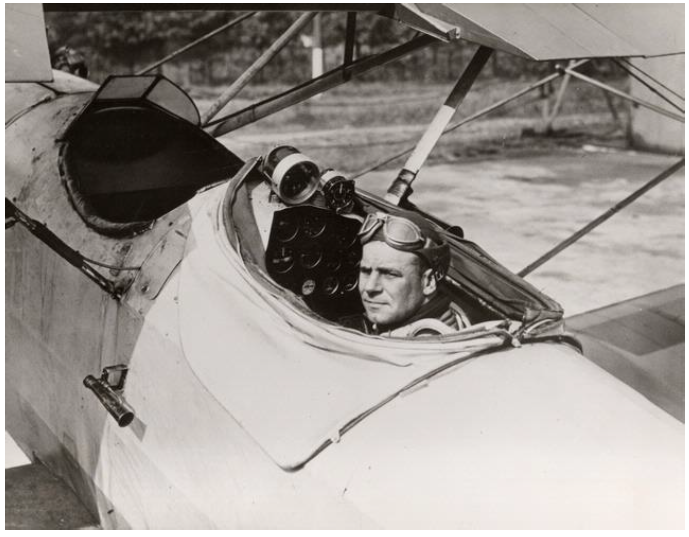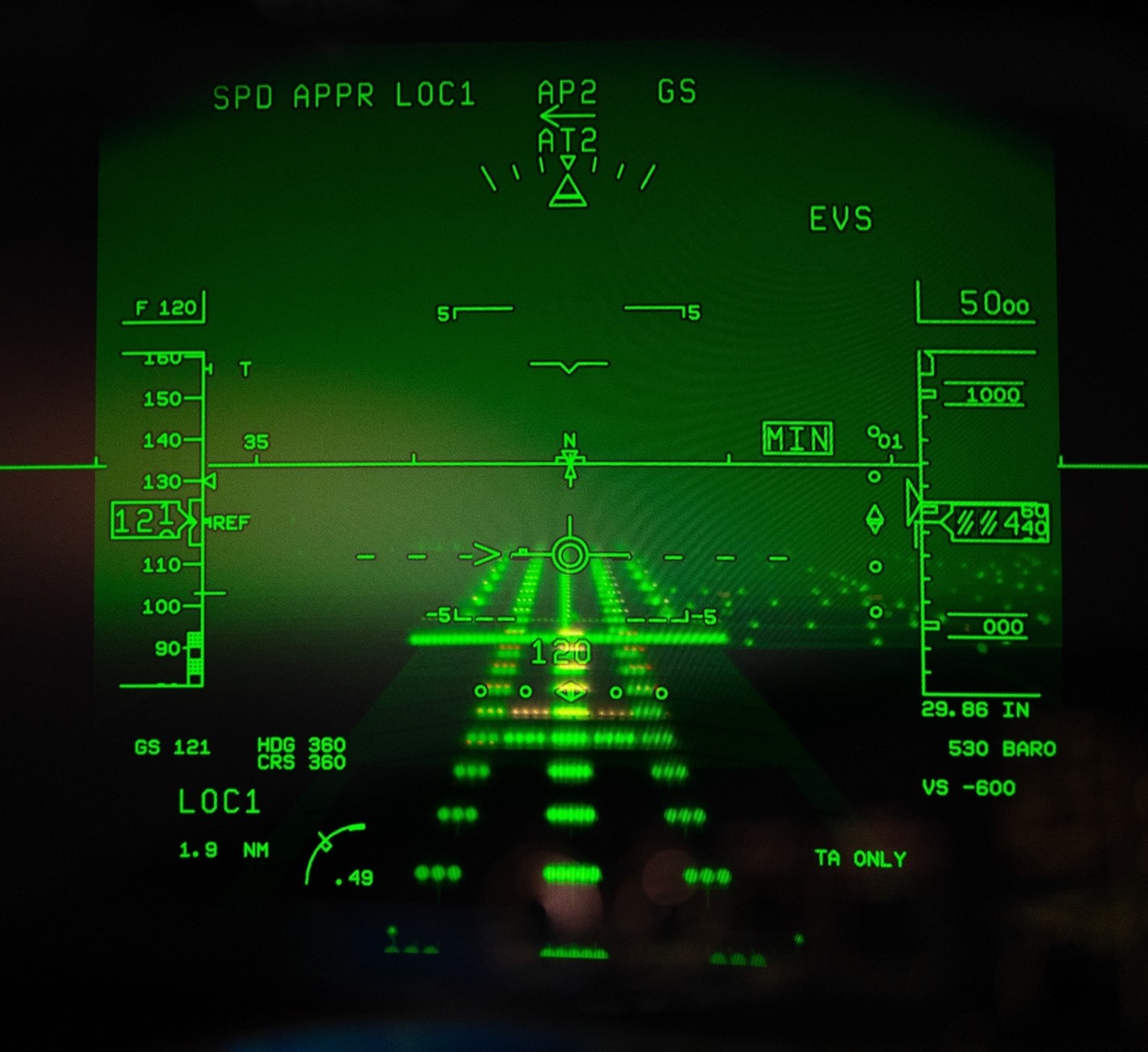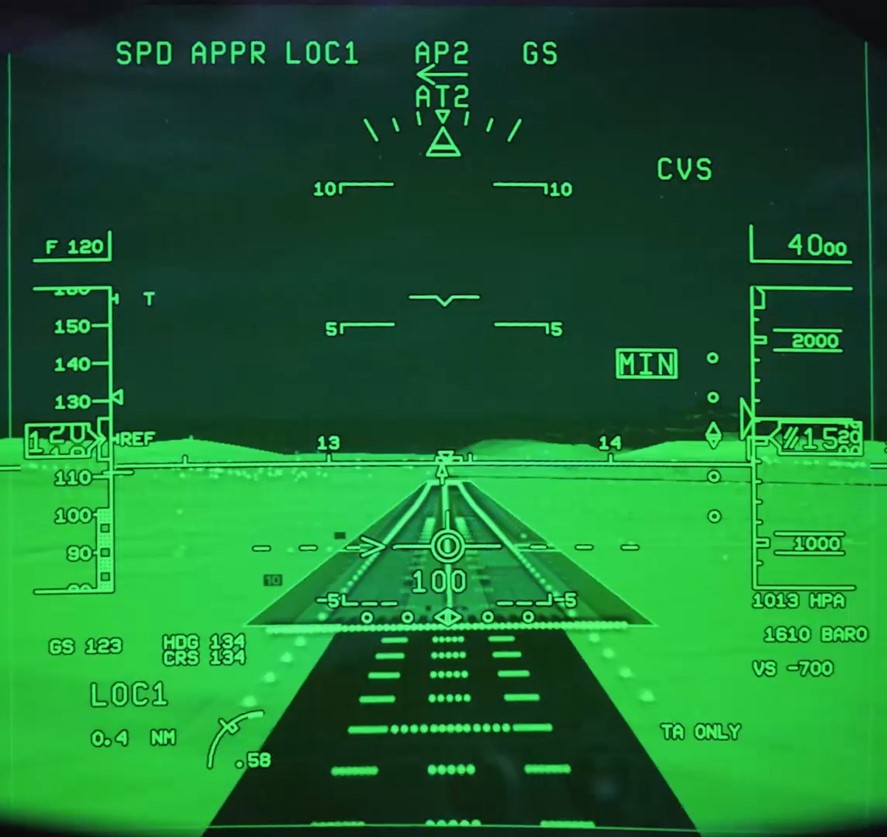by Benoit Saulnier, Program Manager, Commercial Flight Standards Division, Civil Aviation, Transport Canada
Lieutenant James H. Doolittle, Air Corps, United States Army, in rear cockpit of the Consolidated NY-2 Husky, NX7918, a trainer equipped with experimental flight instruments (Source: National Air and Space Museum, Smithsonian Institution (SI 79-9405)).
The concept of all-weather operations saw its earliest beginnings in the late 1920s, as various aviation innovators sought to enable aircraft to take-off and land under instrument meteorological conditions (IMC). This work gave birth to the instrument landing system (ILS), now widely used as one of the key types of navigation aids for instrument approach procedures. This work was largely expanded in the 1970s with the development of Category II (CAT II) and Category III (CAT III) ILS and automatic landing systems, enabling very low or no decision heights for these instrument approach procedures.
Modern technology such as infrared-based enhanced flight vision systems (EFVS) or computer-based synthetic vision guidance systems (SVGS) are allowing us to re-think how all-weather operations are being approached, allowing a transition from a paradigm which is based on designing systems so that the visual references on an instrument approach are not needed to complete a landing, to a paradigm where we can find new ways of meeting the requirement to acquire visual references on an instrument approach.
New technology: Enhanced flight vision systems
An EFVS is a system which uses an infrared sensor installed on the nose of the aircraft, capturing an infrared image of the external scene ahead of the aircraft. This image is then displayed to the pilot using a head-up display (HUD) or an equivalent display. The advantage of the infrared sensors used by the EFVS is that, under many types of weather conditions, it can provide a view of the external scene using thermal contrast, where the naked eye is not able to do so due to an obscuring phenomenon (i.e., cloud, fog, snow, etc.).
Figure 2: EFVS image displayed on an aeroplane’s HUD (Proprietary to CAE Inc. © CAE Inc. 2024)
Therefore, aircraft equipped with a certified EFVS can use this system to acquire the visual references needed by the pilots to continue an instrument approach beyond the decision altitude or decision height. In many cases, EFVS are also assigned an enhanced visibility factor, allowing civil aviation authorities to provide an operational credit (i.e., a reduction of the minimum visibility required to conduct an instrument approach) based on that enhanced visibility factor. EFVS systems have now been used safely in the U.S. and in Europe for over a decade, enabling more operational flexibility and accessibility to aerodromes during reduced and low-visibility conditions.
What other technologies can be used?
EFVS have so far been prevalent on large cabin business jets but are still seeing very limited use on other types of aircraft. However, there are other types of technologies in use with a larger number of aircraft. Technologies such as HUD, synthetic vision systems and auto-land systems can also be used to improve access to airports during reduced or low visibility operations. As opposed to an EFVS, where the system is used as an alternative to acquiring the visual references required to enter into the visual segment of an instrument approach, the above systems allow to extend the instrument segment to lower decision altitudes or decision heights. While this is already being done on Category II and III ILS approaches, these technologies are now being used to enable new types of instrument approach procedures with lower decision heights and required visibility values. These new types of procedures such as Specific Approval (SA) CAT I and SA CAT II have been very successfully introduced by the U.S. Federal Aviation Administration (FAA) and in other parts of the world. One of the key advantages of these procedures is that they allow instrument approach procedures to be flown to approach minima that are lower than standard Category I precision approach minima, but to runways that may not have all the expensive ground infrastructure that is typically required for CAT II and CAT III ILS operations.
Figure 3: Combined vision system image which combines elements of EFVS and synthetic vision system (Proprietary to CAE Inc. © CAE Inc. 2024).
The reduced ground infrastructure is then mitigated by these more advanced aircraft systems such as HUD, synthetic vision guidance systems and auto-land systems. This concept of using aircraft equipment to enable lower approach minima is also referred to as performance-based aerodrome operating minima.
How is Transport Canada facilitating this transition?
The approach ban safety initiative is an excellent opportunity to take stock of the ways in which other civil aviation authorities have safely introduced new systems and types of instrument approach procedures to improve access to aerodromes under all-weather operations. The success in implementing these systems and procedures in the U.S. and in Europe is largely driven by the data-based approach which drove their introduction, and this is something that Transport Canada (TC) builds on to introduce these into the Canadian framework.
Figure 4: HUD system such as those which can be used for SA CAT I ILS approach procedures (Source: Bombardier Inc.).
For EFVS operations, TC is working on a global exemption to the Canadian Aviation Regulations (CARs), which will enable EFVS operations in the short term while work continues on the approach ban safety initiative. This global exemption will be designed to enable air operators and private operators to conduct EFVS operations in Canada.
Provisions will also be added to the regulatory amendments developed under the approach ban safety initiative, which would codify the requirements for the conduct of EFVS operations in Canada into the CARs. With regards to the other new procedures, such as SA CAT I and SA CAT II, TC is also working towards the introduction of these new types of instrument approach procedures. While the new instrument approach criteria, which will be published in The Criteria for Instrument Procedure Development(TP 308) Change 9, will introduce some changes to how approach visibility minima are applied by pilots, these new types of procedures are intended to facilitate continued access to airports such as Ottawa, Edmonton and Québec City, which do not have Category II or III ILS approaches. The use of these new instrument approach procedures, along with use of EFVS, will require a specific approval/special authorization.
In closing, the introduction of EFVS and other new technologies enabling lower approach minima will greatly improve the operational flexibility of operators and ensure the continued improvement to the ability of pilots to land safely at aerodromes in poorer visibility conditions. Additionally, while these systems and procedures will initially provide the greatest advantage at larger airports, the installation of EFVS systems on a wider range of aircraft as the technology becomes more mature may also improve access to aerodromes in more remote parts of the country, and with sensor technology continuing to improve, this is only the beginning.
Benoit Saulnier is a Program Manager with the Commercial Flight Standards Division. With a total of 4 500 hours of flying time, Benoit holds type ratings on the Airbus A320, Bombardier Global Express, Dash 8 – Q400 and Beech 1900. He has also instructed on a wide range of aircraft types. In his work at TC, Benoit oversees the development of regulations, standards and guidance material pertaining commercial flight operations, including the development of regulations and guidance for EFVS and other emerging technologies.



